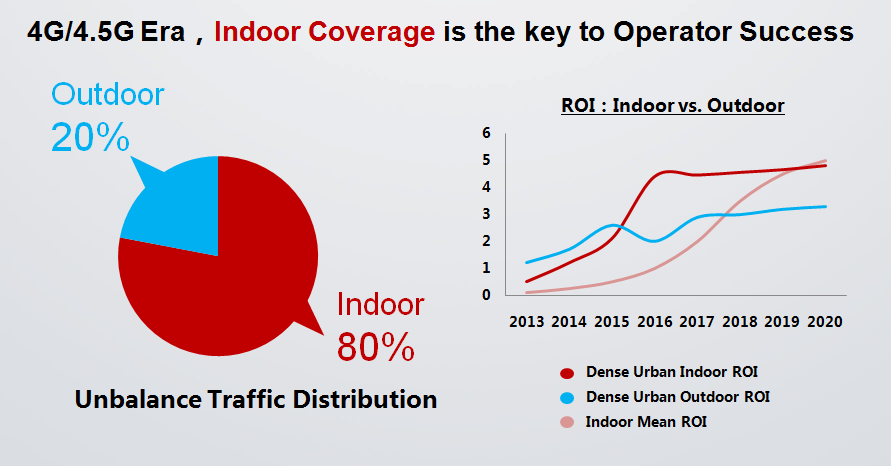Ericsson today announced Networks Software 16A, featuring the latest LTE software upgrades for improving the indoor coverage.
The strategy of Ericsson is to assist telecoms to improve indoor coverage when the world will have 4.3 devices per user and an additional 26 billion connected devices in 2020 thanks to the growth of the Internet of Things (IoT).
Ericsson Networks Software 16A promises more
# to boost network uplink speeds by up to 200 percent
# to increase downlink speeds by up to 30 percent
# to include LTE Unlicensed (LTE-U)
# telecoms to utilize 64 Quadrature Amplitude Modulation (QAM) on uplink to provide 50 percent better peak speeds of 75 Mbps
# enables uplink carrier aggregation, which can double uplink data speeds
# offers 200 percent improvement to provide peak uplink data rates up to 150 Mbps
# indoor space boost download speeds by 30 percent using 256 QAM encoding
The new features of Network Software 16A are designed to boost network uplink speeds by up to 200 percent, downlink speeds by up to 30 percent and adding LTE Unlicensed (LTE-U), the first commercial step in Licensed Assisted Access – as well as features to support better energy efficiency of small cells.
Telecoms are learning the hard fact that Wi-Fi cannot service the need for mobile voice services or text messaging, much less handle the business-critical applications that require the app coverage, voice services, and full mobility provided by cellular.
“While operators have understood that they need to design mobile networks for increasing amounts of data now, Wi-Fi networks have traditionally been the solution of choice for indoor connectivity for enterprise customers,” said Mike Sapien, principal analyst Enterprise Services, Ovum.
Ericsson Networks Software 16A includes two uplink enhancements that will enable mobile network operators to utilize 64 Quadrature Amplitude Modulation (QAM) on uplink to provide 50-percent better peak speeds of 75 Mbps. In addition, it enables uplink carrier aggregation, which can double uplink data speeds. Combined, these improvements provide peak uplink data rates up to 150 Mbps, which is a 200 percent improvement.
Further enhancements focused on the indoor space boost download speeds by 30 percent using 256 QAM encoding.
In a live demonstration with Ericsson, Telstra achieved the world’s first download peak rates of 600 Mbps using this new feature. Devices that support these advances become available this year, in line with commercial availability of the Ericsson Networks Software 16A.
Networks Software 16A also includes LTE-U, to drive higher performance.
“To keep pace with mobile broadband demand from both consumers and industry, operators need solutions that deliver both high performance and efficiency. Ericsson’s indoor software innovations deliver both,” said Arun Bansal, senior vice president and head of Business Unit Radio, Ericsson.
Baburajan K
[email protected]






